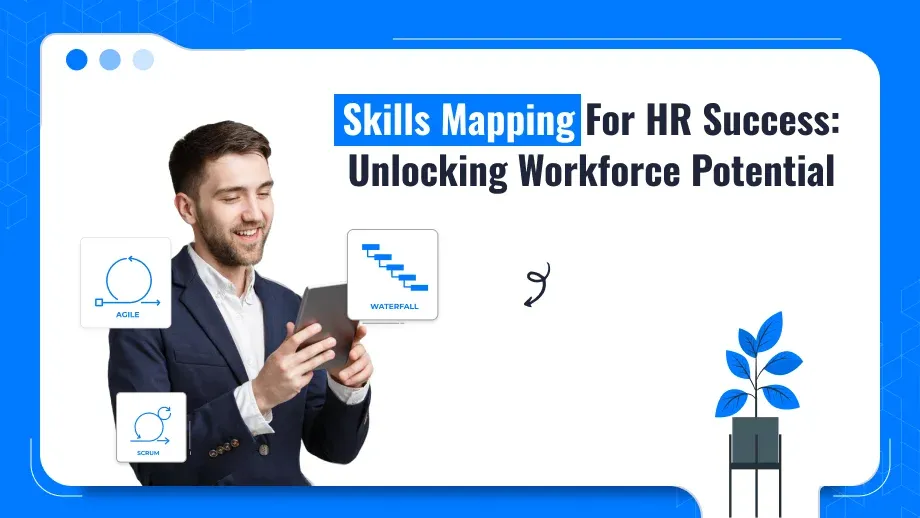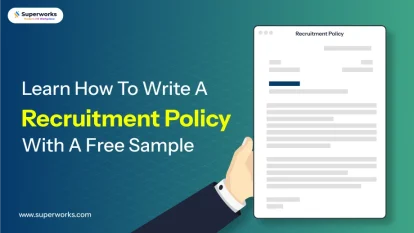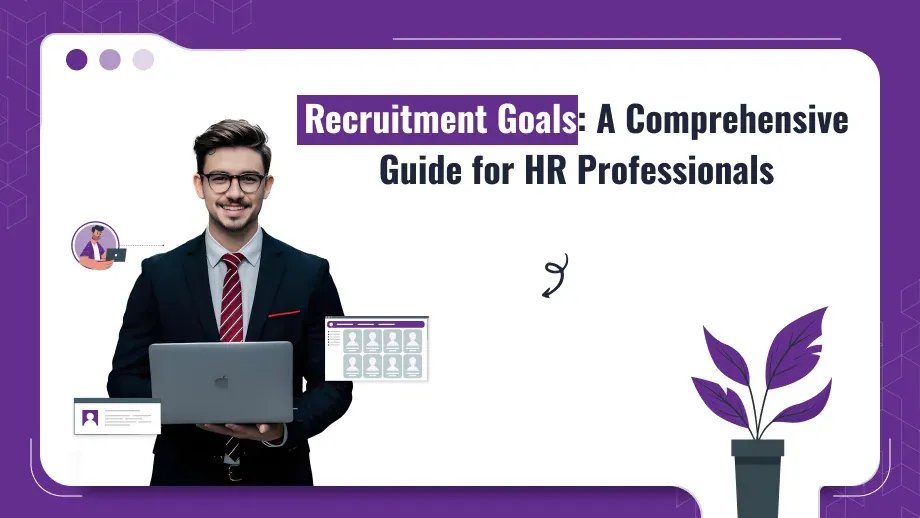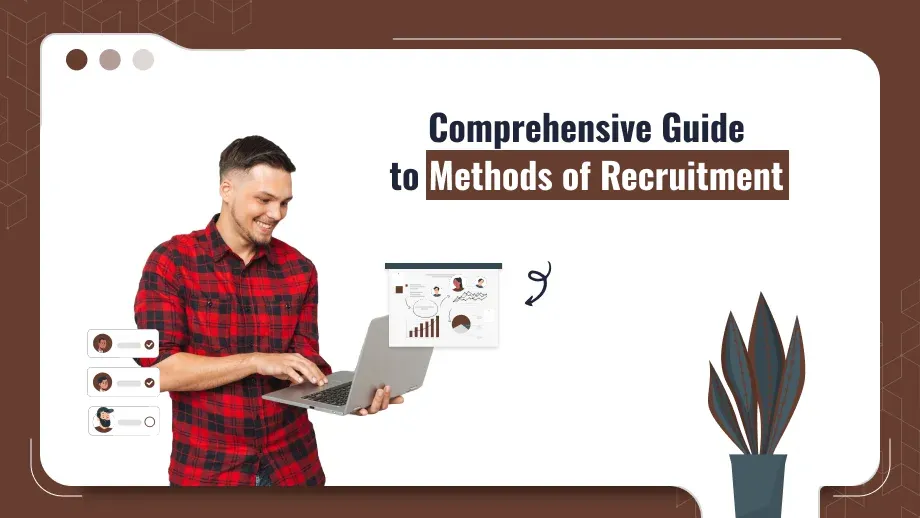
Skills mapping is a must for every HR department today. Trying to associate the workforce of an organization with the objectives of the business by using skills management and understanding, skills mapping brings seriousness to the workplace. Skills mapping is discovering, evaluating, and recording the skills that are available inside an organization. It gives the entire picture of employee capability and helps decide on recruitment, training, and development needs.
What is skills mapping?
Skills mapping is the systematic, detailed process organizations use to identify, assess, and document the skills and competencies existing within their workforce. It is not a simple listing of employee abilities but a deep analysis of the skill sets required to realize the goals and objectives of an organization. By creating a framework for understanding employee capabilities, it helps align the workforce to the overall organization.
Skills Mapping in HR
Strategic Alignment
One of the main functions of a skills map is to allow the workforce skills to be in line with the business goals of the organization. An HR leader can resource and tailor their talent acquisition strategies based on knowing the skills required to deliver business goals. For example, an organization is going digital; through a skills map, it is possible to map out the currently available digital skills within the employees and outline the gaps needed for filling.
Recruitment and Selection
It is key to improving the recruitment and selection process. By defining the skills for each role, HR can use a skill management system to track candidate qualifications more effectively. This targeted approach means organizations can create more efficient talent pool management software, reducing time and cost to hire.
Employee Development
A skills project can be used by HR professionals to assess what skills an employee needs to develop. Such understanding is critical as it lets one mold the design of training projects, both at an individual and organizational level. The right kind of employee skill management system allows the employees to access appropriate developmental opportunities that maximize job satisfaction levels and retention.
Performance Management
It also enables performance management by providing a framework for evaluating employee performance. When skills are defined and documented, managers can measure employee performance against those criteria, so feedback is constructive and relevant. This process improves employee feedback management and makes it easier to set clear expectations and measure progress.
Succession Planning
This is the final step towards succession planning. Organizations can prepare their high-potential employees for promotion by determining which competencies they need in those future leadership jobs. This proactive approach ensures the continuity of leadership and minimizes disruption through turnover.
Transform your HR practices with effective skills mapping.
Get to the bottom of organizational gaps, develop talent, and achieve organizational excellence!
Skills Mapping Benefits
Improved Talent Management
The greatest advantage has been through talent management. It identifies and aligns the skills of the workforce to their business objectives, thus getting the right people into the right roles. This strategic approach improves employee performance engagement and productivity. When employees are in a specific role that fits their strengths or expertise, they will contribute more to the organization’s goal.
Recruitment
It helps refine recruitment strategies of the HR teams as it brings transparency into the gaps that exist in the skill sets within an organization. An organization that has implemented a good skill management system will be able to target the source of candidates with the skills required, which leads to a more efficient recruitment process and time and resources wasted while waiting for the right fit.
Employee Development and Retention
It will develop employees and retain them. Once the concrete areas where particular skills are lacking have been identified, proper training programs can be planned that will meet the exact requirements for employee development. When employees realize that their growth is actively supported by careful training and developmental efforts, then they will become all the more involved and dedicated to the organization. This strategy on employee development alone will enhance the retention level and capability of the whole workforce and position the employees in a better place to face the responsibilities required and to work within a very agile team.
Succession Planning
It is key to effective succession planning. By identifying the skills needed for future leadership roles HR can ensure high potential employees are ready to step into those roles when needed. This proactive approach means minimal disruption during leadership transitions and knowledge and responsibility transfer. Organizations that invest in succession planning it will be better equipped to maintain continuity and stability even in times of change.
Organisational Agility
Flexibility is imperative in an increasingly changing business climate; otherwise, competitiveness will not be achievable. It can help HR quickly pinpoint the skills that will be needed to change tack or direction due to shifts in the market or trends. Once you have a clear view of what skills exist within the workforce, you can bridge the skill gaps and get geared to adapt to new challenges. Agility is key to staying competitive in a dynamic market.
Increased Employee Engagement
Skills would be recognized and valued, and, hence, employees would most likely be inducted based on the fact that their competencies are recognized, this comes along with the fact of having a transparent process within the company where those skills are assessed and career progression as well, hence a recognition and appreciation culture within the organization. People will be motivated to do a good job of what they do if they recognize their contributions are being valued, and that is determined by better performance, and job satisfaction also rises.
The Skills Mapping Process
Step 1: Skills Required
This will include skills alignment toward business outcomes and understanding the key competence critical to success. HR will pursue its identification of the skills required for each role in the organization through direct engagement with department heads and other key stakeholders about the skills required for current and future roles.
Step 2: Current Skills
Identify the skills required before evaluating the current skills of the employee. Evaluate the skills of the employees by self-assessment, manager assessment, and skills assessment. Using these tools organizations can collect and analyze this data. Surveys, interviews, and performance reviews will provide valuable insights into employee capability.
Step 3: Skills Inventory
After ascertaining the skills of employees, an organization should create a skills inventory. This skills inventory will point out and record the various skills that exist in the workforce. It becomes a very fundamental tool that HR makes use of while making decisions relating to recruitment, training, and developing individuals. A well-structured skills inventory helps in resource allocation and assigning people to projects.
Step 4: Gaps and Development Needs
With a skills map in place, organizations can analyze the data to identify skill gaps. Skills gaps allow HR to tailor training to identified development needs. It will also delineate some of the areas of recruitment from external sources.
Step 5: Development Plans
The final step in this process is to implement development plans to close the identified skill gaps. This may involve creating custom training programs, providing mentorship opportunities, or using online learning platforms. HR should monitor the effectiveness of these plans and adjust as needed.
Tools and Technologies for Skills Mapping
- Skills Mapping Software: Specialised tools to help organizations create and manage skills inventories, track employee progress, and assess skill gaps. These platforms will have dashboards and analytics to visualize skill data.
- Applicant Tracking Systems (ATS): Applicant tracking systems: Can interact with such tools to streamline recruitment and ensure that candidates evaluate against the skills needed for the job. This will keep the hiring process consistent.
- Employee Feedback Management Systems: Tools to collect and analyze employee feedback to evaluate skills and performance. These systems can automate feedback collection making it easier for HR to measure employee satisfaction and development needs.
Best Practices for Skills Mapping
Engage Stakeholders
The most important stakeholders who will be engaged include employees, managers, and executives. Their input will help establish which skills are the most relevant and in such a way get buy-in at all levels of the organization. Workshops and focus groups will provide valuable feedback during this process.
Culture of Continuous Learning
Encourage a culture of continuous learning and employees will embrace the skills mapping process. Promote the message that skill building is a career growth path for employees and organizational success.
Update Skills Maps Regularly
Skill map updates consideration of regularly scheduled training, workshops, and lunch-and-learns to engage employees in new skill building. This proactive approach will keep this process relevant and effective. Having a review schedule will help keep the skills inventory up to date.
Use Data Analytics
With data analytics, it will be more effective. The analysis that organizations will make in terms of trends and patterns in their workforce development and talent acquisition makes it even better in decision-making. Predictive analytics can further assist HR in forecasting future skill needs based on the current market trends and changes within the organization.
Measure and Evaluate
The success of the skills mapping project would be measured with metrics. Progress tracking would, therefore, enable HR to measure the impact of its training programs, employee development, and ultimately the capacity of the workforce. To do so, they can facilitate regular feedback sessions to understand their employees’ adaptation to their development plans.
Skills Mapping Tips
Engage Stakeholders Early
Engaging the concerned stakeholders either the department head, team leader or staff should be done very early in this process. Their input will provide valuable context about the skills required for each role. Engage them through workshops, interviews, and surveys to gather input and get buy-in. This will create ownership and encourage participation throughout the process.
Define Objectives
Before starting a skills project you need to define your objectives. What do you want to achieve from the mapping process, is it to enhance recruitment, improve employee development, or succession planning? Having clear objectives will guide the project and measure its success.
Use Standardised Assessment Tools
To ensure consistency and accuracy in skill assessments use standardized tools and frameworks. Either by self-assessment, peer assessment, or manager assessment, having a systematic method of data collection will ensure that the data collected is valid and consistent across all employees and positions.
Use Technology
Consider using a skills mapping tool or software that can collect, analyze, and store skill data. These tools often have dashboards, analytics, and reporting functions that will help visualize and interpret the skills inventory. Using technology will also facilitate collaboration and communication with stakeholders.
Create a Skills Inventory
Make a comprehensive skill inventory that captures not only technical skills but also the soft skills and competencies relevant to your success as an organization. Ensure it is duly updated over time to capture changes in employee skills, business needs, and industry trends. In this way, comprehensive inventories will be beneficial for decision-making and strategic planning.
Continuous Development
It’s not an event; rather, it’s a process. Developing a learning and developing culture in your organization requires reinforcement. This can be done by encouraging employees to enhance their practice with the acquisition of training programs, workshops, and mentoring. Review the skills map regularly to ensure it aligns with changing organizational goals and employee aspirations.
Communicate the Value
Explain how it will lead to personal growth opportunities, career advancement, and job satisfaction. If employees understand organizational and self-care benefits realized through it, they are likely to contribute much more effectively to the whole process.
Skills Mapping Challenges
Resistance to Change:
Employees may resist the skills process if they see it as an extra workload. To overcome this organisations should communicate the benefits and involve employees in the process. Clear communication on the purpose and benefits of it will help alleviate fears.
Data Accuracy:
The data collected during the skills assessment must be accurate. Organizations should use standardized assessment tools to ensure data reliability. Regularly calibrating assessments and training evaluators will help maintain data integrity.
Time and Resource Constraints:
A skills project can be time-consuming and resource-heavy. Organizations will need to reserve time for the project. With technology and automation, the time it takes to gather and analyze data will be cut significantly.
Summary
It is one of the essentials that the HR leaders need to create. This is because skills in the workforce can directly be related to the organization’s goals and through which HR can develop recruitment, employee growth support, performance management, and succession planning.
A skills mapping project will enable the organization to streamline recruitment while continuously promoting a learning and development culture. It requires investment in an evolving business landscape.





